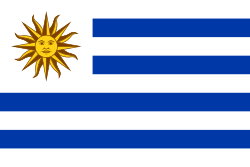Super Soccer
| Super Soccer | |
| År | JP: 13 december 1991[1] NA: Maj 1992[1] EU: 4 juni 1992[1] |
|---|---|
| Utvecklare | Human Entertainment |
| Utgivare | Human Entertainment |
| Genre | Sport (fotboll) |
| Format | SNES[1] |
| Medieformat | Kassett |
| Arbetslag | |
| Musik | Hiroya Niwayama Hironori Tanaka Masamichi Yamazaki Tetsuji Ohtani[2] |
Super Soccer är ett fotbollsspel till Super NES som utkom 1991 i Japan och maj 1992 i USA. Spelet utvecklades av Human Entertainment och släpptes av Nintendo. Spelaren kan välja bland 16 olika landslag att spela med.
Lag
Efter ranking
 Tyskland
Tyskland Argentina
Argentina Italien
Italien Brasilien
Brasilien Nederländerna
Nederländerna England
England Kamerun
Kamerun Rumänien
Rumänien Irland
Irland Frankrike
Frankrike USA
USA Japan
Japan Colombia
Colombia Jugoslavien
Jugoslavien Uruguay
Uruguay Belgien
Belgien Portugal
Portugal Förenade Arabemiraten
Förenade Arabemiraten
Källor
- Den här artikeln är helt eller delvis baserad på material från engelskspråkiga Wikipedia.
Fotnoter
- ^ [a b c d] Super Soccer på GameFAQs
- ^ ”Soundtrack Information”. SNESmusic.org. http://snesmusic.org/v2/profile.php?profile=set&selected=2841.
Externa länkar
- Super Formation Soccer på superfamicom.org
- (franska) 1UP, skillnader mellan japanska och västerländska versioner.
- (japanska) スーパーフォーメーションサッカー / Super Formation Soccer på Super-Famicom.jp
Media som används på denna webbplats
Flag of England. Saint George's cross (a red cross on a white background), used as the Flag of England, the Italian city of Genoa and various other places.
Flag of the Socialist Federal Republic of Yugoslavia (1946-1992).
The design (blazon) is defined in Article 4 of the Constitution for the Republic of Yugoslavia (1946). [1]
Flag of the Socialist Federal Republic of Yugoslavia (1946-1992).
The design (blazon) is defined in Article 4 of the Constitution for the Republic of Yugoslavia (1946). [1]
The civil ensign and flag of Belgium. It is identical to Image:Flag of Belgium.svg except that it has a 2:3 ratio, instead of 13:15.
Flag of Portugal, created by Columbano Bordalo Pinheiro (1857–1929), officially adopted by Portuguese government in June 30th 1911 (in use since about November 1910). Color shades matching the RGB values officially reccomended here. (PMS values should be used for direct ink or textile; CMYK for 4-color offset printing on paper; this is an image for screen display, RGB should be used.)

















